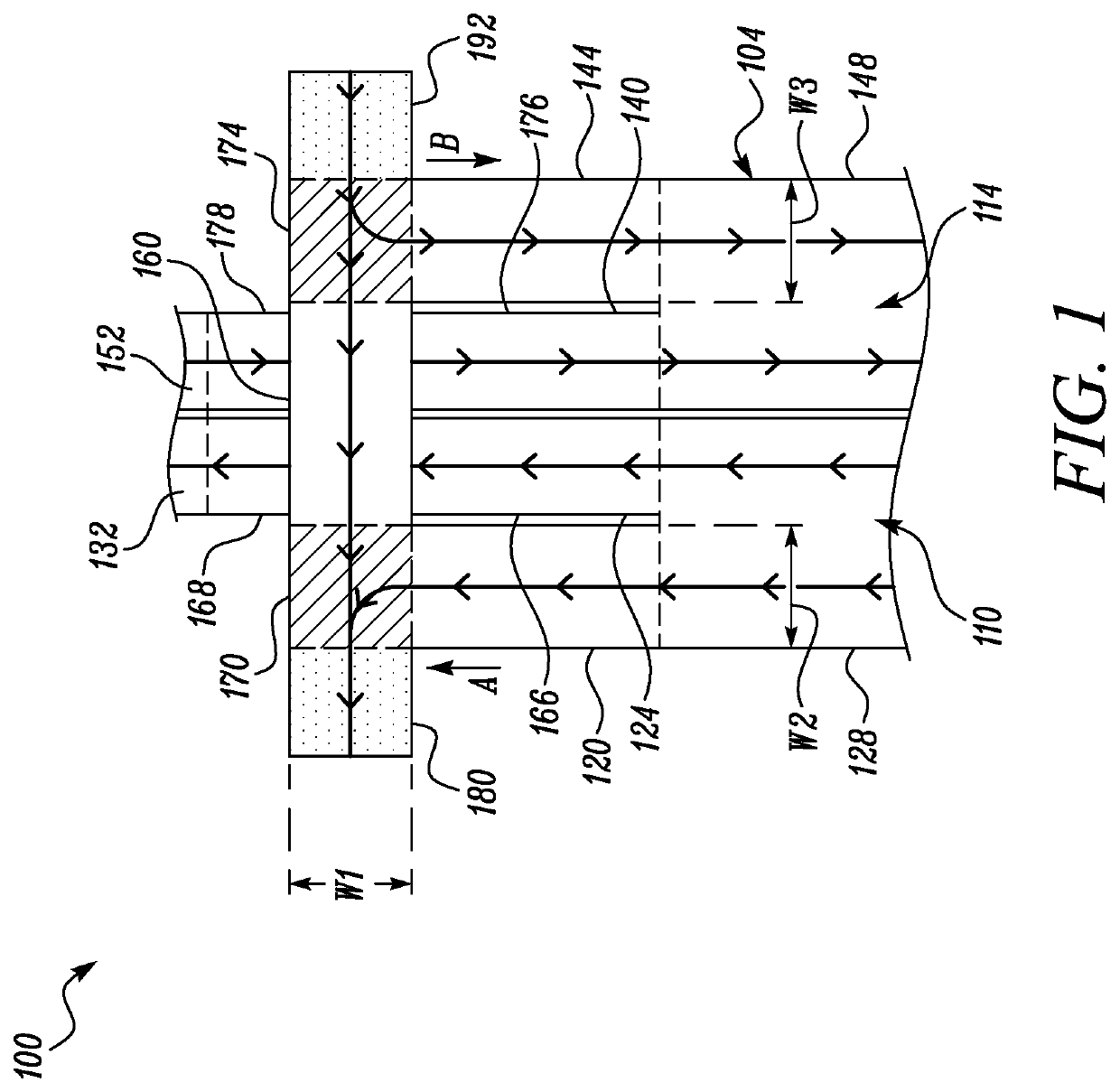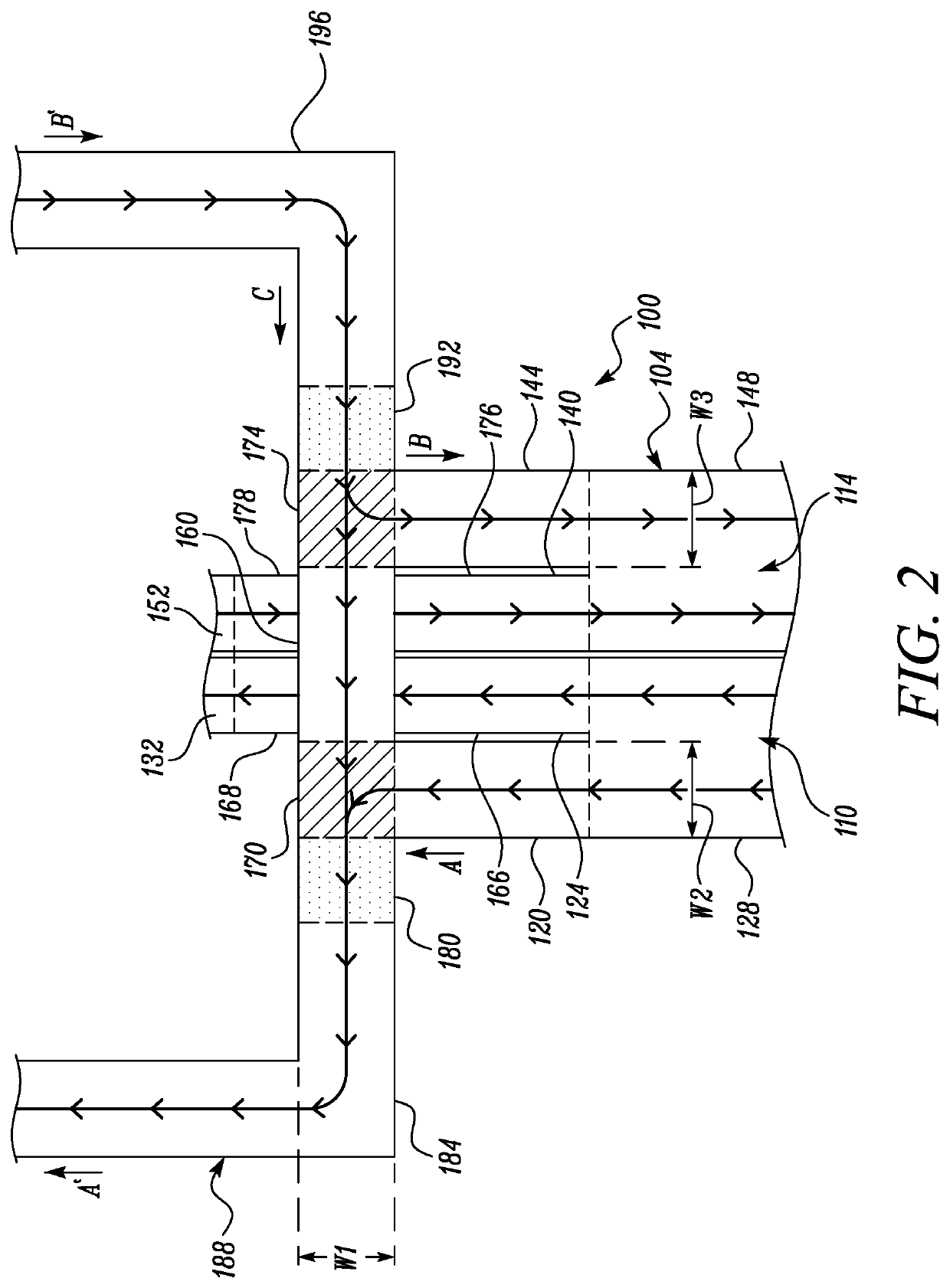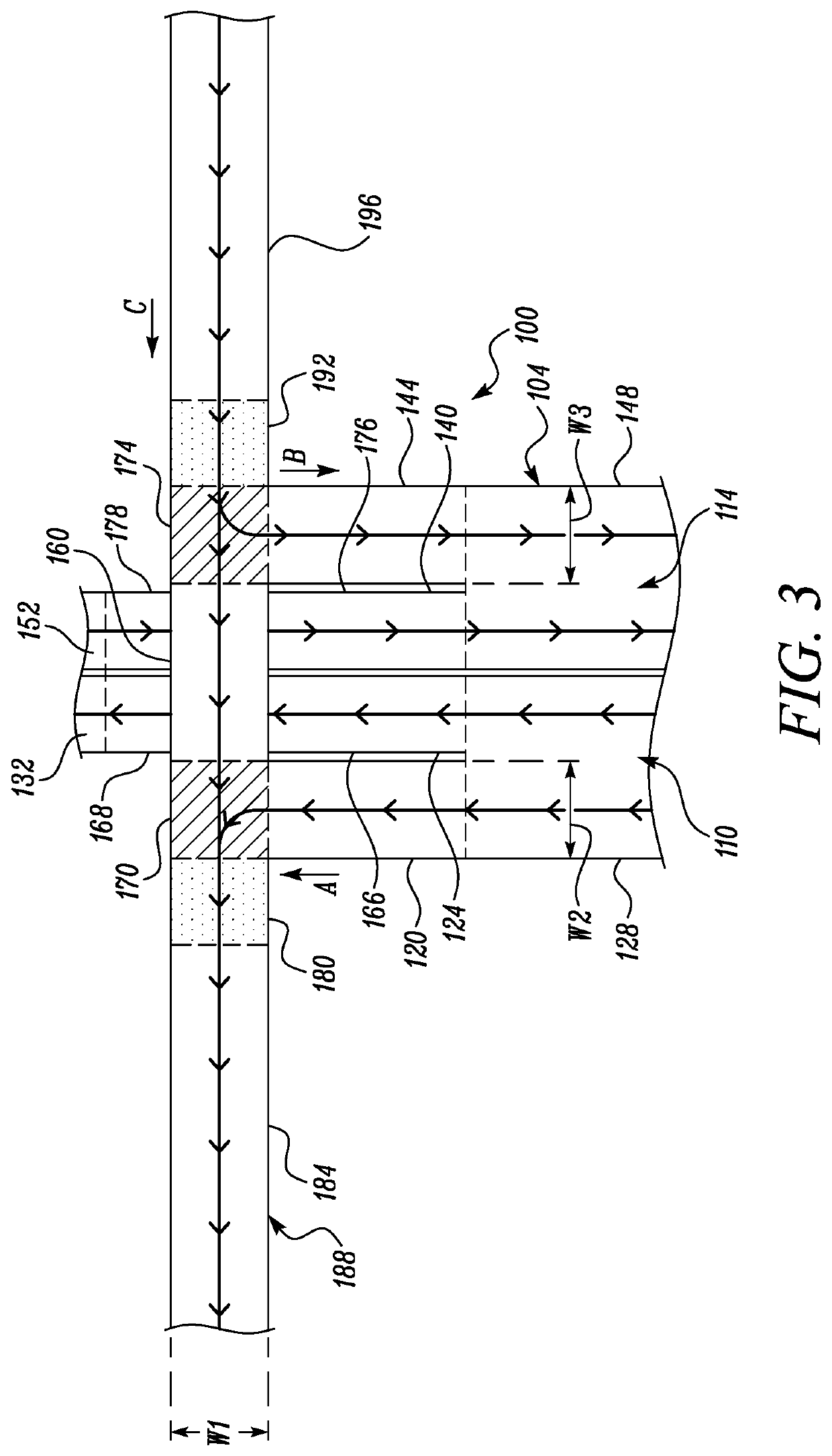Interchange system for a roadway
- Summary
- Abstract
- Description
- Claims
- Application Information
AI Technical Summary
Benefits of technology
Problems solved by technology
Method used
Image
Examples
Embodiment Construction
[0006]Reference will now be made in detail to specific embodiments or features, examples of which are illustrated in the accompanying drawings. Generally, corresponding reference numbers will be used throughout the drawings to refer to the same or corresponding parts.
[0007]Referring to FIG. 1, an interchange system 100 for a roadway 104 is shown. The roadway 104 includes a first carriageway 110 and a second carriageway 114. The first carriageway 110 may be configured to facilitate traffic movement in a first direction (e.g., direction, A), while the second carriageway 114 may facilitate traffic movement in a second direction (e.g., direction, B). As an example, the first direction may be opposite to the second direction. As shown, both the first carriageway 110 and the second carriageway 114 may be generally linearly extending carriageways, although profiles of the carriageways may differ in actual practice and application from what has been illustrated and / or disclosed in the prese...
PUM
 Login to View More
Login to View More Abstract
Description
Claims
Application Information
 Login to View More
Login to View More - R&D
- Intellectual Property
- Life Sciences
- Materials
- Tech Scout
- Unparalleled Data Quality
- Higher Quality Content
- 60% Fewer Hallucinations
Browse by: Latest US Patents, China's latest patents, Technical Efficacy Thesaurus, Application Domain, Technology Topic, Popular Technical Reports.
© 2025 PatSnap. All rights reserved.Legal|Privacy policy|Modern Slavery Act Transparency Statement|Sitemap|About US| Contact US: help@patsnap.com



